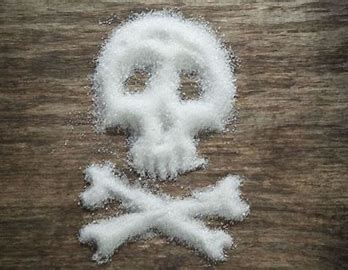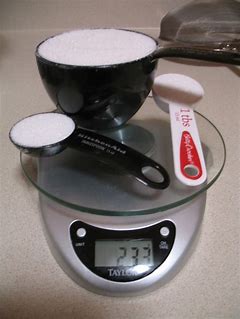
Is a teaspoon of sugar in your coffee OK? Or should we heed
the warnings that say we should eliminate it entirely? Here’s the truth about
sugar.
First it was fat, now sugar is in the firing line. Health
experts agree that most of us eat too much sugar. But how much is too much? And
what about so-called “natural” sugars?
The sugar we’re most familiar with is sucrose, which is the
chemical name for white table sugar that’s made from sugar cane. But sugar also
occurs naturally in foods that contain carbohydrates, such as fruit,
vegetables, grains and diary products.
This is where the confusion creeps in. It’s important we
make distinction between sugar that’s added to food, called extrinsic sugar,
and sugar that is naturally present in foods, called intrinsic sugar.
It’s the added sugar that is linked with health problems,
not the sugar that’s found naturally in healthy foods such as fruit.
What are the health concerns?
Sugar has been blamed for many ills, from hyperactivity and
depression to hormonal imbalances and lowered immunity. The science isn’t
strong for many of these claims, but experts believe that sugar in excess
contributes to obesity, heart disease, dental decay, and type 2 diabetes.
Most of the concern about high sugar diets has been focused
on weight gain. When we eat too much sugar our livers can turn it into fat, and
this fat can be deposited around our waist and internal organs. This is known
as visceral fat and is especially harmful because it increases the risk of heart
disease and type 2 diabetes. Excess body weight has also been linked to an
increased risk of some forms of cancer and dementia.
How much sugar is safe to eat?
The World Health Organisation (WHO) recommends limiting
‘free’ or added sugars to less than 10 per cent of our total energy intake (or
five per cent for added health benefits). This equates to around 12 teaspoons a
day for an average adult.
Many people exceed this limit, often without knowing. ‘Free
sugars’ don’t just come from us adding sugar to tea, coffee and home-cooked
treats; they are also added to many foods by manufacturers, including cakes,
biscuits and breakfast cereals. Sugar is also added to less obvious foods, such
as salad dressings, curry pastes, pasta sauces, deli meats and some breads.
Even tomato and barbeque sauces contain sugar – about a teaspoon for every
serving.
Sugar-sweetened drinks are particularly problematic. A can
of soft drink contains up to 10 teaspoons of added sugar, while a 600ml (20oz)
bottle can have 14 teaspoons. These drinks are easy to consume and don’t fill
you up like food does.

How to calculate how much sugar you’re eating
Food labels can tell you how much sugar is in a food, but
they don’t tell the whole story.
There are two parts to a food label: the list of ingredients
and the nutrition information panel (NIP). The NIP is also called the nutrition
facts label in some countries.
The NIP will list total sugars per serving and per 100g.
What it won’t tell you is whether that sugar is a natural part of the food or
added by the manufacturer. This can be very misleading with a food such as
natural Greek yoghurt. While the NIP will list sugar, this is the lactose – an
intrinsic, natural sugar of diary foods. If you want to know whether a pot of
yoghurt has sugar added, you have to read the list of ingredients.
When sugar is added to a food it must be included in the
list of ingredients. You’d think sugar would be easy to spot, but there are
over 40 different names for added sugar, including barley malt, evaporated cane
juice, fruit juice concentrate, dextrose, molasses, and maltose. Going back to
the example of yoghurt, and added sweetener may appear as sucrose, fruit juice
concentrate or honey.
Before you make a resolution not to let any sugar pass your
lips, even WHO don’t recommend zero intake, most people would benefit from
reducing our intake, but we don’t need to totally quit. So that’s good news for
the chocolate lovers among us.
Which sugar is the healthiest?
Coconut sugar, rapadura, maple syrup, agave, rice malt syrup
– they are all sugar, all act in a similar way in the body, and all have the
same kilojoules. Some may be slightly less processed and contain trace amounts
of nutrients but nothing that’s going to make a significant difference to your
health – only your wallet.
Ways to be wise around sugar
- Don’t drink your sugar. Sweetened
drinks are the easiest way to over-consume sugar, and these include soft
drinks, sports drinks, and fruit juice.
- Read the labels on the foods you
eat most often. Some will have more added sugar than you suspect. And if any
form of sugar is listed in the top three ingredients, that suggests it’s a
high-sugar food.
- Want to work out how many
teaspoons of added sugar a product has? One teaspoon holds about four grams of
sugar.
- Enjoy baking? Cut the sugar by at
least one third – you’re unlikely to notice the difference.
- Don’t avoid whole fruit and dairy
because of their intrinsic sugar – these are foods that are part of a healthy
diet and haven’t been linked to any adverse health outcomes.